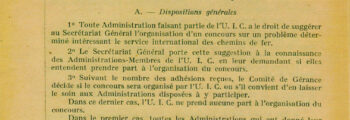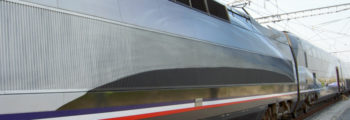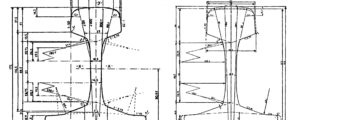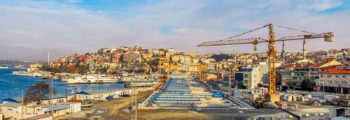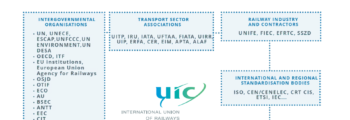UIC centenary
1829 “Rocket” Stephenson
1829
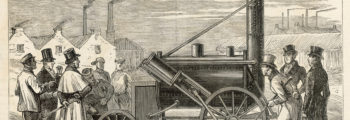
The “Rocket” locomotive by George Stephenson reaches 50km/h. Since the origin of railways in Europe during the Industrial Revolution at the beginning of the 19th Century, the speed of passengers trains was an essential argument to compete. Railways were conceived in the first half of the 19th century, mainly (though
Read more1843 First international line
1843
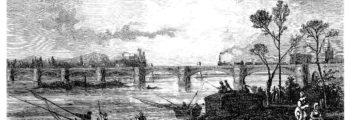
The first ever international railway line is that which linked Liège and Cologne in 1843.
Read more1846 First associations: Prussian Railways and VDEB
1846

In 1846, under the impetus of the Berlin Railway Company, 10 German national authorities founded a Prussian railway association with the aim of streamlining their operations the « Verein Deutschen Eisenbahnverwaltungen ». The following year, the railways from the constituent territories of the German Confederation (44 German networks and four
Read more1848 – London Time
1848

In 1848, when every town still had its clock, the various nascent English railway companies agreed on a common reference time: London time. The train had created the national time which itself made it possible to invent a schedule. The reference GMT time was introduced 35 years later in the
Read more1872 European Passenger Train Timetable Conference (CEH)
1872
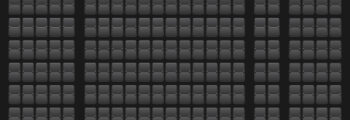
From 1872, the European Passenger Train Timetable Conference defined the times of passenger trains, particularly for cross-border operations, as well as the consist of international trains and connections with domestic services. Network representatives met each year with a view to ensuring speedy, punctual, safe and comfortable passenger services.
Read more1875 Bern conferences
1875

In 1875 the Federal Council – Switzerland’s government – took the initiative to invite the governments and railway administrations (public and private) of the European states to an international conference in Bern, Switzerland, in May-June 1878. This first conference was followed by two others in 1881 and 1886, also held
Read more1876 Georges Nagelmackers founded the Compagnie Internationale des Wagons-Lits
1876

In 1876 was founded the Compagnie Internationale des Wagons-Lits (CIWL): buffet carriage, with two dining rooms for 12 diners, dates from 1882, and two years later the saloon carriage made its appearance, definitively establishing the company’s reputation for supreme luxury. But the true legend was born on 4 October 1883
Read more1882 Conference for the Technical Unity of railways
1882

In August 1882, following the inauguration of the Saint-Gothard Railway which so clearly illustrated the railways’ international calling, the Swiss Federal Council invited the governments from the adjoining states to an international conference of experts on the technical unity of railways. On 21 October 1882, the state representatives signed a
Read more1885 1st international railway Congress in Brussels
1885

1887 2nd International Railway Congress in Milan 1889 3rd International Railway Congress in Paris 1892 4th International Railway Congress in St Petersburg 1895 5th international railway Congress in London 1900 6th international railway Congress in Paris 1905 7th international railway Congress in Washington 1910 8th international railway Congress in Bern 1915
Read more1919 Treaty of Versailles
1919

The beginnings of UIC go back to the period immediately following the First World War. When the Paris Peace Conference took place in early 1919 to prepare the forthcoming Treaty of Versailles, the allied powers entrusted a Commission on the International Regime of Ports, Waterways and Railways with the task
Read more1920 Recommendations proposed after the Treaty of Versailles – SDN Société des Nations
1920
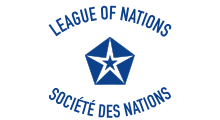
The Council of the League of Nations (LON), officially formed in 1919 and established in Geneva in 1920, tasked a temporary committee for communication and transit with preparing proposals for “the creation of an organisation which will form part of the LON to address issues related to communication and transit…and
Read more1921 RIV/RIC
1921
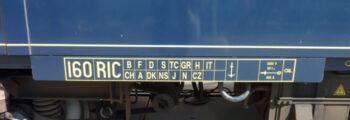
In 1876 an international union for the exchange of rolling stock was established in Brussels, which was responsible mainly for the repatriation of empty freight cars, the carriage of train parts, the repair of damage, and the payment of bonuses and insurance claims, etc. Members included the railways of Germany,
Read more1921 Portorose Conference
1921
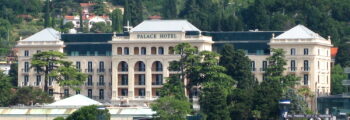
The conference of Portorose in Italy (now Portorož in Slovenia), which in late 1921 declared itself in favour of an “association” of railways, took place at a seaside resort in modern-day Slovenia in the aftermath of a war that saw the break-up of the Austro-Hungarian Empire and the creation of
Read more1922 Genoa International Conference
1922

The international conference in Genoa (April – May 1922) proposed that the standardisation of European railways be accelerated by conferring the continued management of this issue, previously given to diplomats, on the network operators. And it was France which found itself entrusted with the task of preparing an international conference
Read more1922 Paris Conference, birth of UIC
1922
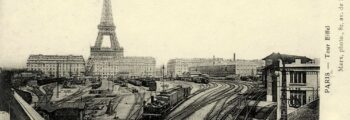
The Paris Conference was held from 17 to 20 October 1922 at the headquarters of the French Society of Civil Engineers, with the participation of 27 countries and 46 networks as well as two representatives from the League of Nations. With the exception of Finland which could not attend, all
Read more1923 UIC declared as association
1923
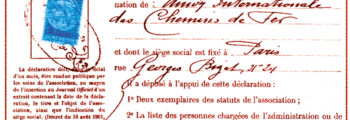
The International Union of Railways – the nascent UIC – was composed of three management bodies: a General Assembly, a Board of Management comprising 12 members and the chairman (whose mandate began the same day), and a permanent general secretariat based in Paris. At the proposal of the British delegate,
Read more1923 UIC 1st Headquarters
1923
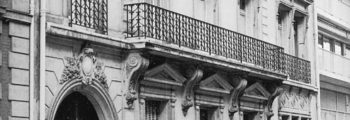
24 rue Georges Bizet was the first UIC Headquarters building until January 1931, when UIC moved to 10 rue de Prony, 75017. © Photorail – SNCF
Read more1926 First UIC logo
1926

In July 1923, the International Union of Railways (UIC) was officially pronounced an association formed in accordance with the French law of 1901. In 1926, it acquired a logo which would be re-worked or updated on several occasions – in 1950, 1985, 2003 and most recently in 2010 (the new
Read more1931 UIC 2nd Headquarters
1931
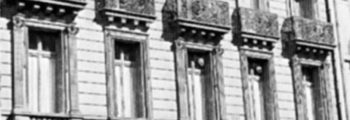
10 rue de Prony was the second UIC headquarters building from January 1931 to 1963, then UIC moved to 116 rue Jean rey, Paris 15°. © Photorail – SNCF
Read more1932 – 103 UIC Leaflets
1932

The work carried out within the five permanent technical committees resulted in the publication of “UIC leaflets”, technical documents whose application was either obligatory or optional. These technical leaflets constituted the beginning of an international railway “code”, also known in practice as the “UIC Code”. Initially published in French and
Read more1939 UIC counts 51 networks from 33 countries and 400,000 km of lines
1939

Amongst the subjects benefiting from technical cooperation and international harmonisation were the conditions governing the use of continuous braking ; the safety of vehicles operating under catenaries; new signalling standards; the study of the risks run by railway staff ; the easing of financial exchange between railway companies (following a
Read more1949 Interfrigo, a UIC Standard
1949
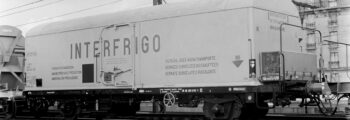
SNCF-MEDIATHEQUE SARDO- M. KUHY 1966 Interfrigo (a refrigerated and temperature-controlled transport company founded in 1949) and Intercontainer, an international combined transport company (known today as ICF: Intercontainer-Interfrigo); and the Europabus grouping, comprising the international tourist coach services operated by 14 railway companies. The European Pallet Pool (EPP) and the European
Read more1949 the UN grants UIC consultative status
1949

In 1949, the United Nations Organisation (Economic and Social Council) granted UIC consultative status to the UN to represent the railway sector worldwide. This administrative act was of symbolic value: it was the first mandate given to UIC by the international community to represent and promote this mode of transport
Read more1950 ORE
1950
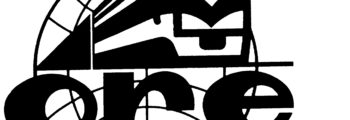
In the area of technical study and research, UIC created its Office for Research and Experiments (ORE) in 1950 in Utrecht (Netherlands). The latter was in charge of carrying out studies for the purposes of standardisation and, more generally, any studies and experimentation work necessary for the projects coordinated by
Read more1953 EUROP Wagon Pool
1951
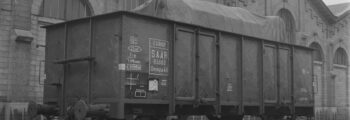
The EUROP WagonPool, a European operations pool initially bringing together the railways of France and Germany, and subsequently expanding to include a dozen or so networks; the famous Trans-Europ Express (TEE) grouping, born of a Dutch initiative with seven participating networks and 13 routes launched in 1957. SNCF Médiathèque –
Read more1953 European Conference of Ministers of Transport
1953

The European Conference of Ministers of Transport (ECMT) was an international organization established in 1953 with headquarters in Paris and reporting to the OECD. At the Dublin session in May 2006, the Ministers decided to create the International Transport Forum (ITF) on this basis, which allows for the membership of
Read more1956 Eurofima
1956

The company Eurofima, was formed in 1956 by 13 networks to facilitate the financing of rolling stock acquisition and conversion. SNCF-MEDIATHEQUE – MICHEL HENRI
Read more1956 Creation of OSJD
1956
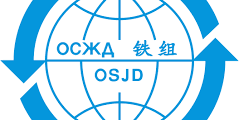
in 1956, under the impetus of the Soviet Union, the socialist countries created the Organization for Cooperation between Railways (OSJD in Russian), headquartered in Warsaw. Most of the OSJD member railways (bar the USSR, North Vietnam, North Korea and Cuba, etc.) were also members of UIC; this was notably the
Read more1958 Trans-Europ Express
1958

The creation in 1958, against the backdrop of the signing of the Treaty of Rome (1957), of a high-quality Trans Europ Express (TEE) network remains a significant milestone in the development of a trans-European rail network serving the citizens of this new community, offering passengers uniform quality standards on all
Read more1961 Trans Europ Express Marchandises
1960
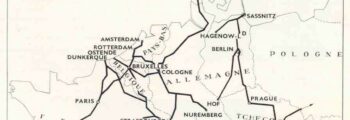
Under the impetus of its passenger and freight commercial committees, UIC defined train networks with a European seal of approval, which offered customers standardised quality criteria on all the connections served by these trains. For freight, this was the Trans-Europe Express Freight network (TEEM, formed in 1961) and EurailCargo in
Read more1960 UIC HQ construction
1960
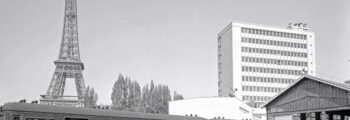
25 September 1960 : beginning of the construction of the new UIC HQ, on a site given by SNCF. SNCF-MEDIATHEQUE – EDGAR DANIS
Read more1961 Euro pallets and UIC other standards for carriages and wagons
1961
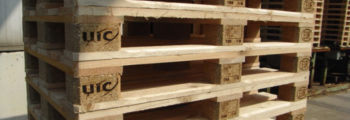
SNCF Médiathèque – DELILLE 1954 SNCF-MEDIATHEQUE – MICHEL HENRI 1983 Interfrigo (a refrigerated and temperature-controlled transport company founded in 1949) and Intercontainer, an international combined transport company (known today as ICF: Intercontainer-Interfrigo); and the Europabus grouping, comprising the international tourist coach services operated by 14 railway companies. The European Pallet
Read more1963 Inauguration of UIC new headquarters
1963
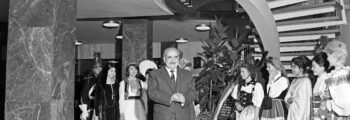
The current headquarters of the international railway organisation at 16 rue Jean Rey, an exceptional location near the Eiffel Tower and the Champs de Mars, were inaugurated on 29 May 1963. SNCF Médiathèque – ROGER On 20 September 1960, the chairman of the German Railways Heinz Maria Oeftering, who
Read more1963 Tour of the building and member contributions
1963

(Copyright Marc Fauvelle) The current headquarters of the International Union of Railways (UIC), located at 16, rue Jean Rey in Paris’ 15th district, and near the Champs de Mars, was inaugurated in 1963. It is UIC’s third headquarters building, having previously been located
Read more1964 Shinkansen- First High Speed line
1964

The advantages of high speed rail operations were first identified during the period prior to the Second World War, in particular in the light of the technical progress made in the areas of electric traction and aerodynamics. Following further developments in electrical supply and traction during the 1950s (it is
Read more1967 : creation of InterContainer, a UIC Standard
1967
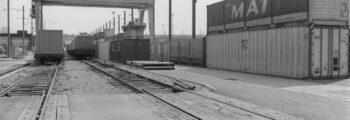
SNCF Médiathèque – COPPIN 1969 Paris Interfrigo (a refrigerated and temperature-controlled transport company founded in 1949) and Intercontainer, an international combined transport company (known today as ICF: Intercontainer-Interfrigo); and the Europabus grouping, comprising the international tourist coach services operated by 14 railway companies. The European Pallet Pool (EPP) and the
Read more1972 Interrail
1972

The InterRail pass, heavily associated with the idea of international mobility and freedom of young travellers, was established at UIC in 1972 to mark the association’s 50th anniversary. The InterRail pass has considerably evolved in format to adapt to new market circumstances, but it still exists today and is run
Read more1972 TEN Trans Euro Nuit
1972
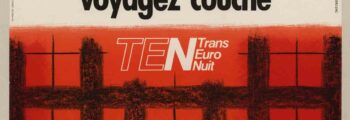
(Médiathèque SARDO/SNCF) SNCF-MEDIATHEQUE – MICHEL HENRI SNCF-MEDIATHEQUE – PATRICK OLIVAIN
Read more1970 Transcontainer Conference
1972
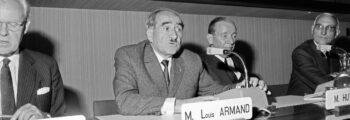
Louis Armand, UIC Chairman, on a press conference at UIC HQ during the transcontainer conference. 30/09/1970 SNCF Médiathèque – MONTPER
Read more1981 TGV
1981
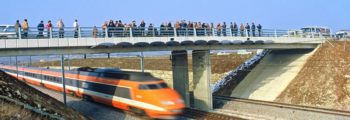
In 1981, the TGV Sud-Est was opened on the new Paris-Lyon line, covering 417 km and operating at speeds of up to 270 km/hr. It was followed by the TGV Atlantique (1989 – 1990), travelling at 300 km/hr, and the TGV Nord in 1993. The first routes in both Japan
Read more1987 HERMES first UIC project
1987
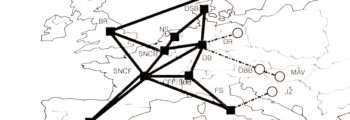
HERMES constituted the first UIC project designed to connect member railways’ IT systems. The first set of functionalities related to centralised traffic management, electronic seat reservation, etc
Read more1987 Eurocity
1987

For passengers, the EuroCity trains offered these uniform quality standards. (Photos G.N)
Read more1988 Creation of CER – Community of European Railway and Infrastructure Companies
1988

Back in 1988, 14 railway companies felt the need to establish a stronger link with the European institutions in the light of increasingly significant political developments in transport. As a result, CCFE-CER was founded as an independent group of the International Union of Railways (UIC) with its own offices in
Read more1990 ERTMS
1990

At the instigation of UIC and under the aegis of the European Union, the European Rail Traffic Management System (ERTMS) was set up at the beginning of the 1990s. ERTMS comprises ETCS, the European Train Control System, and GSM-R, a radio communiation system specifically for railways. The idea was to
Read more1992 GSM-R
1992

With implementation of GSM-R now well underway on Europe’s railways, and worldwide interest beyond its frontiers, the ERTMS/GSM-R project of the UIC has the task of maintaining the GSM-R specifications, developed under the EIRENE project, managing the UIC roll-out plan for the system and handling issues and problems that arise
Read more1994 Channel Tunnel
1994

Her Majesty the Queen Elizabeth II and French President François Mitterrand inaugurated the Channel Tunnel on 6 may 1994. Inauguration Eurostar train sets left from London and Paris and made for the first time a junction in Calais. The first trip of the Eurostar took place on 14 November 1994.
Read more1995 Raildata
1995
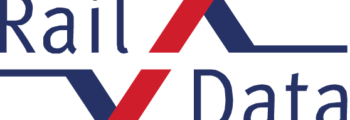
RailData is a special group of the International union of railways (UIC). The main purpose of RailData is to develop and run central IT systems for European freight railway undertakings. There are currently five main IT systems in production: ORFEUS (Open Rail Freight EDI User System) – CIM consignment note
Read more2002 Establishment of EIM – European Rail Infrastructure Managers
2002

EIM, established in Brussels in 2002, also has as its aim the development of rail transport, advisory work to the European institutions on rail-related policy areas, and supporting bodies such as the European Railway Agency (ERA). UIC, whose members include both CER and EIM members, brings its contribution to bear
Read more2002 Safety database
2002

The Saftey Databse was created in 2002 (2006: first reliable info) UIC records descriptions of significant railway accidents in its Safety Database. All UIC members are invited to participate on a voluntary basis.The Safety Database contains information on more than 40,000 accidents in 33 countries. For further information, please visit
Read more2009 UIC’s status as a single, global association is upheld by the new statutes
2009
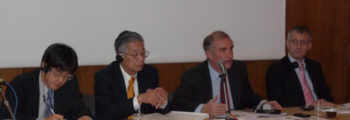
The new statutes dispel all the ambiguities which had led to the prior dysfunction. They uphold the (unique) global calling of UIC, thus ending the Europe/World dichotomy, and define clear rules of governance. The General Assembly, which brings together all 200 members, constitutes the singular governing body of UIC, and
Read more2009 GCU
2009

A Memorandum of Understanding (MoU) establishing the common principles of a certification system of the Entities in Charge of Maintenance (ECM) of Freight Wagons has been signed under patronage of the European Union, on May 14th 2009, in the premises of B-Holding, between 10 EU Members States. This MoU follows
Read more2009 Train to Copenhagen
2009

Jean-Pierre Loubinoux, Director General of UIC, the initiator of this special train, together with Achim Steiner, the Executive Director of the United Nations Environment Programme and James P. Leape, Director General of WWF hosted more than 400 high level “EcoPassengers”: climate change negotiators, business leaders, environmental activists and journalists on
Read more2010 EcoTransit and EcoPassenger
2010

On 5 November 2009 the UIC members signed a joint declaration stating that rail was part of the solution to combat CO2 emissions in the transport sector and that UIC and its members were committed to further strengthen their efforts in this area. The declaration was symbolically carried by train
Read more2011 China takes the lead on high speed in the world
2011
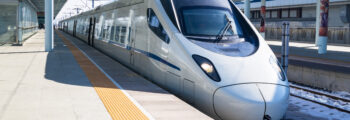
In terms of speed records, and km of lines, China becomes first in the world.
Read more2013 One belt one Road
2013
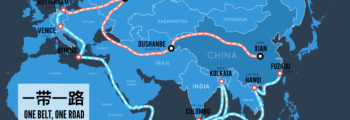
China is nevertheless keen to diversify its trading routes and in 2013 launched the project “One Belt, One Road”, aimed at stepping up connectivity and integrating trade routes with those of Eurasia. The project, which includes maritime and land components, as well as of course the New Silk Roads, is
Read more2014 ATTI Agreement on freight Train Transfer Inspection
2014

The ATTI SG is a UIC special group within the Freight Forum. It is made up of RUs, some of which are UIC members and some of which are not. It works on an independent basis, with only the General Assembly determining its remit.The ATTI SG sets the rules governing
Read more2014 MERITS
2014
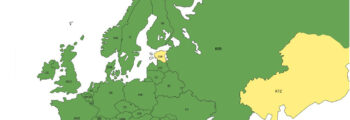
Multiple East-West Railway Integrated Timetable Storage MERITS is a single database containing timetable data for many different railway companies. The data is integrated and reproduced twice a week. MERITS is designed to provide rapid access for each railway company to all the data needed to produce timetables and to operate
Read more2015 Maglev record
2015
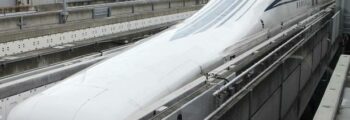
Japan’s maglev train broke its own world speed record just days after it broke its previous 12-year-old record. The seven-car magnetic levitation train set a world record on 21 April 2015 when it hit 603km/hour and maintained this speed for 11 seconds. The train beat the 590km/hour speed it had
Read more2015 Digital Platform – DIGIM
2015

On 30 November, UIC officially launched the UIC Railway Digital Platform in the presence of more than 250 participants, including CEOs of UIC Members, representatives of railway research and railway activities, heads of digital activities within railway companies, journalists, etc. The conference was also available via streaming so that representatives
Read more2015 COP21 in Paris
2015
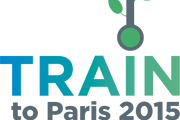
The first ‘Railway Climate Responsibility’ pledge was presented to high-level representatives of the United Nations. The Climate Responsibility pledge was signed by more than 60 UIC members, representing most of global rail activity. The UIC co-ordinated campaign “Train to Paris” bringing delegates including national governments, NGOs, decision-makers and journalists from
Read more2015 Creation of the concept of IRS
2015

The concept of IRS, International Railway Solution, was created in 2015, leading to a gradual transfer of leaflets into IRSs. The first IRS was launched in 2016.
Read more2016 UIC counts 200 Members
2016

The geographical area covered by UIC has constantly expanded since 1922. Beyond the initial group of 51 members comprising the railways of Europe and physically connected regions – Near and Middle-East, the Maghreb and Asia (the core of “active members”) – UIC has gradually established cooperative links with railways on
Read more2016 TOPRAIL
2016

In the context of steadily growing international tourism, TopRail is a UIC project that actively promotes railway tourism products by increasing the visibility of service offerings. This is accomplished by fostering close collaboration between stakeholders and their customers to encourage railway tourism opportunities. Railway tourism is able to offer a
Read more2018 Hyperloop
2018

The development of different Hyperloop initiatives in various regions of the world have raised some recurring questions, which address both technical and business aspects, as well as standardisation issues. UIC, as a worldwide transport forum, has identified the potential of Hyperloop systems as a new and disruptive guided ground system
Read more2019 FRMCS – 5G
2019
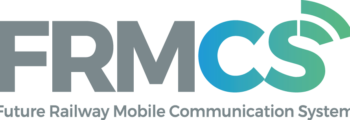
The first Global FRMCS conference The first Global FRMCS Conference took place on 14-15 May 2019 in Paris, UIC headquarters. This conference will be a unique opportunity to know about the current status of FRMCS specification and standardisation, to understand the global timeline of its introduction and to consider the operational
Read more2019 ECCO project
2019
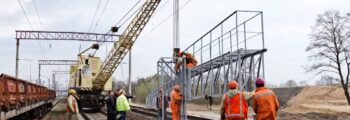
Rail Freight Corridors (ECCO) UIC IRS on Rail Freight Forward Contingency Management handbook In 2019, UIC published the Contingency Management handbook for Railway Undertakings. This handbook was committed to by the Rail Freight Forward coalition (RFF), as mentioned in its vision paper “30 by 2030”. It outlines harmonised international contingency
Read more2020 Shift2Rail
2020
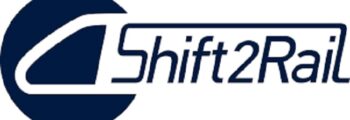
Horizon 2020 and Shift2Rail are just two of the projects where universities are directly involved in partnership with UIC. We could also mention ERRAC (European Rail Research Advisory Council), the technical platform set up by the European Union to cater for the needs of its members with regard to rail
Read more2020 ETCD Ticketing
2020
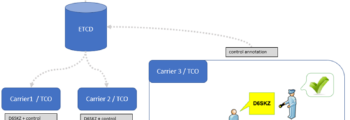
UIC, with the support of Hit Rail B.V, has developed a project for the provision of its Electronic Ticket Control Database (ETCD). The new service vastly improves the ability of railway companies to issue and control rail passenger tickets across a number of countries and will increase security and help
Read more2020 OSDM
2020
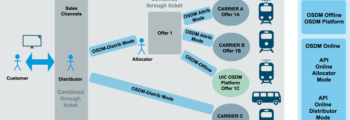
In 2020, UIC completed the procurement process for the implementation of the PRIFIS replacement tool and the design of the new related specification called Open Sales and Distribution Model (OSDM). The OSDM Platform replaces the former PRIFIS international tariff distribution tool, a shared database containing prices and tariffs for non-reservation
Read more2020 UIC COVID Task Force
2020

The UIC has created a COVID-19 Task Force dedicated to providing the rail industry with concrete measures amidst the rapidly spreading viral outbreak.
Read more2020 Maglev breaking record in China
2020
2021 ATO
2021
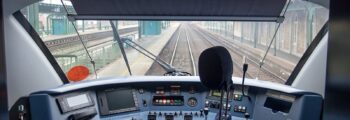
An online webinar, “Autonomous Technologies in Rail – Anticipating Expectations” was held on 9 June with over 400 registered participants, bringing together experts from four continents who shared their experience in research, development and implementation of autonomous railway systems for passengers and freight. Participants were provided with an overview during
Read more2021 DAC
2021

Digital automatic coupling (DAC) is one of the key elements for transformation of the European rail freight sector. The DAC will increase productivity, efficiency and service quality, either directly or as an enabler, thereby increasing competitiveness. Together with smart capacity increases, DAC will be a game changer in shifting more
Read more2021 UIC technical solutions
2021

The 120 working groups of the UIC – the International Union of Railways – develop technical solutions in all areas of railway business. Let’s take a tour around some examples of the output they have delivered.
Read more2022 Flexible Content Barcode (FCB)
2022
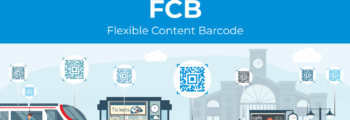
UIC publishes new factsheet on the Flexible Content Barcode (FCB) The UIC Passenger Department has released a new factsheet on the Flexible Content Barcode (FCB), the most modern UIC standard in rail barcode ticketing. The FCB barcode holds all transport contracts in an open, unencrypted format. The data itself is
Read more2022 UIC Refugee Task Force
2022

The international railway community showed solidarity with the people of Ukraine after the begining of the war in February 2022. As a contribution to bring coordinated relief to the refugees, the UIC has set up a “refugee task force”. The task force exchanges know-how and identify ideas for: – the
Read more2022 UIC promotes rail worldwide through international events
2022
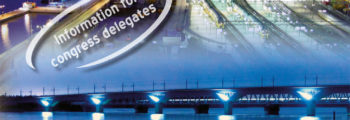
UIC also promotes rail transport worldwide through a chain of international events, congresses, conferences and seminars, tackling specific issues in railway development. Depending on their subject, these events may be aimed at political and economic decision-makers, representatives of international and regional organisations, investors, manufacturers and universities from around the globe.
Read more2022 SDG Rail Index
2022
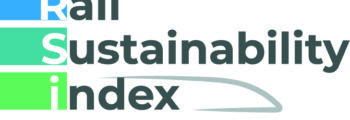
Rail Sustainability Index project The Rail Sustainability Index (RSi) is a new tool being designed for and with the global rail community. The previously named ‘SDG Rail Index’ tool will provide the UIC members with a unique rating system and a supportive digital platform based on the Sustainable Development Goals of
Read more2022 Excellence in Railway Publication Awards
2022

The International Union of Railways (UIC) is pleased to announce the launch of the 2022 edition of the competition which celebrates excellence in Railway publications. Following on from the success of previous events, the scope of this one is extended to a wider range of documents. The aim is to
Read more2022 UIC at WCRR Birmingham
2022

World Congress on Rail Research– 6-10 June 2022 – Birmingham UK Reshaping our railways post-pandemic: Research with an impact UIC took part in the 13th World Congress on Railway Research held from 6 – 10 June 2022 at the International Convention Centre (ICC) in Birmingham, UK, hosted by RSSB and
Read more2022 UIC International Sustainable Railway Awards
2022

As the world strives to build a kinder, greener and more prosperous future, UIC launched the first International Sustainable Railway Awards (ISRA). ISRA recognises railway projects and initiatives for social, environmental and economic sustainability. The awards form part of UIC’s vision for the future of rail, sharing worldwide best practice and
Read moreGreetings video from ADIF
2022
Greetings video from Amtrak
2022
Greetings video from BLS
2022
Greetings video from Korail
2022
Greetings video from BANE NOR
2022
Greetings video from CR
2022
Greetings video from HZ
2022
Greetings video from JR-EAST
2022
Greetings video from SZCZ
2022
Greetings video from SJ
2022
Greetings video from MAV
2022
Greetings videos from RENFE
2022
Greetings video from TCDD
2022



